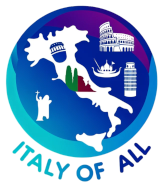The province of Messina, situated in the northeastern part of Sicily, Italy, is a region rich in history, cultural diversity, and stunning natural landscapes. Bordered by the Tyrrhenian Sea to the north and the Ionian Sea to the east, Messina is known for its rugged coastlines, picturesque mountains, and significant historical sites, making it a captivating destination in Sicily.
Geographically, Messina stretches from the northeastern tip of Sicily up to the foot of the Peloritani mountains and across diverse landscapes that include the famous Aeolian Islands. This varied terrain provides both dramatic coastal scenery and lush mountainous areas, offering numerous opportunities for outdoor activities like hiking, sailing, and exploring isolated beaches and coves.
Historically, Messina has been a crucial Mediterranean hub due to its strategic position close to the mainland of Italy, just across the Strait of Messina. This location has made it a key point of contention and cultural exchange throughout history, influenced by Greeks, Romans, Arabs, Normans, and Spaniards, among others. The city of Messina itself has a storied past, having been severely damaged by an earthquake in 1908 and again during World War II, yet it retains a wealth of architectural and cultural heritage, including the Norman Messina Cathedral and the Astronomical Clock.
Culturally, Messina is celebrated for its vibrant festivals and cultural events, most notably the annual procession of the Vara, an elaborate religious festival held on August 15th that honors the Assumption of the Virgin Mary. The province is also a center of folklore and traditional music, and its towns often host lively celebrations that blend religious devotion with communal festivity.
Cuisine in Messina is as diverse as its landscape, heavily influenced by the sea and its bountiful produce. Signature dishes include “pesce spada alla ghiotta” (swordfish), “pasta alla norma,” and various seafood antipasti. The region is also known for its desserts, particularly “cannoli” and “granita,” a semi-frozen dessert made from sugar, water, and various flavorings typically enjoyed with a brioche bun.
Economically, Messina’s economy is driven by a combination of agriculture, particularly citrus fruits and olives; fishing; and increasingly, tourism, supported by the natural beauty and historical sites of the area. The Aeolian Islands, with their dramatic volcanic landscapes and clear waters, draw a significant number of tourists annually, boosting the local economy.
Despite challenges such as economic diversification and recovery from historical natural disasters, Messina is actively engaged in preserving its cultural heritage and promoting sustainable tourism as a means to enhance its economic resilience and quality of life for its residents.
Overall, the province of Messina offers a compelling mix of natural beauty, historical depth, and vibrant cultural life. Its ongoing efforts to preserve its unique heritage and landscapes while fostering sustainable development ensure its continued significance as a vital and attractive region of Sicily.
Comuni in Messina Province:
- Alcara li Fusi
- Alì Terme
- Acquedolci
- Alì
- Antillo
- Barcellona Pozzo di Gotto
- Castroreale
- Castelmola
- Capo d’Orlando
- Capri Leone
- Capizzi
- Castel di Lucio
- ** Castell’Umberto
- Campofelice di Fitalia
- Caronia
- Brolo
- Casalvecchio Siculo
- Falcone
- Fondachelli-Fantina
- Fiumedinisi
- Forza d’Agrò
- Cesarò
- Ficarra
- Malfa
- ** Giardini Naxos
- Gualtieri Sicaminò
- Malvagna
- Furnari
- Gioiosa Marea
- Limina
- Librizzi
- Graniti
- Furci Siculo
- Gallodoro
- Lipari
- Longi
- Frazzanò
- Gaggi
- Francavilla di Sicilia
- Letojanni
- Leni
- Motta d’Affermo
- Monforte San Giorgio
- Pace del Mela
- Montalbano Elicona
- Mongiuffi Melia
- Naso
- ** Nizza di Sicilia
- Oliveri
- Milazzo
- Militello Rosmarino
- Montagnareale
- Mistretta
- Novara di Sicilia
- Mirto
- Messina
- Motta Camastra
- Merì
- Roccaforte del Greco
- Rodì Milici
- Roccella Valdemone
- Pettineo
- Roccavaldina
- Piraino
- Roccafiorita
- Raccuja
- Roccalumera
- San Salvatore di Fitalia
- Sant’Agata di Militello
- Santo Stefano di Camastra
- San Marco d’Alunzio
- Sant’Alessio Siculo
- Santa Lucia del Mela
- Sant’Angelo di Brolo
- San Piero Patti
- Scaletta Zanclea
- San Teodoro (ME)
- Saponara
- Spadafora
- Santa Teresa di Riva
- Savoca
- San Filippo del Mela
- San Fratello
- San Pier Niceto
- Sinagra
- Torrenova (ME)Torresina
- Valdina
- Terme Vigliatore
- Ucria
- Taormina
- Venetico
- Torregrotta
- Tripi
- Villafranca Tirrena
- Tornaco
- Tortorici
- Tusa
